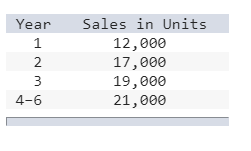Beg. Fixed Asset Basis Book
(12/31/2016): $12,800,000
Ending Fixed Asset Basis Tax
(12/31/2017): $8,600,000
Book Depreciation
Expense: $1,100,000
Tax Depreciation
Expense: $975,000
Municipal Interest
Income: $1,100,000
Non-Deductible Meals and
Entertainment: $675,000
Warranty Reserve
(12/31/17): $5,000,000
Net Increase in Warranty Reserve in
2017: $3,000,000
Temporary Differences and their anticipated reversal as of
12/31/2017:
- Tax Basis in Depreciable Fixed Assets ratably over 7 years
- Book Basis in Depreciable Fixed Assets ratably over 10
years
- Warranty Reserve will reduce 10% per year over the next 4years
(ie; 12/18 balance 10% less than 12/17;12/19 10% less
than 12/18 etc.) and then not change after.
Assume the NOL has a carryforward (no carryback) period of 10
years before expiring.
Assume no limitation on the amount of taxable income the NOL can
offset each year.
Assume a 35% tax rate in 2017 and 21% for 2018 and beyond
Assume that you and your client have concluded there are no
viable tax planning strategies that can be utilized at this
time.
Assume that you and your client have concluded that it is
prudent to assume taxable income from sources other than reversing
temporary differences can be assumed to be $1,200,000 in 2018 and
$900,000 in 2019.You have concluded it is not prudent to assume any
taxable income other than from reversing temporary differences
beyond 2019.
Prepare the following:
Calculate the beginning and ending deferred Tax balances for
2017 (12/31/16 and 12/31/17).
Prepare the appropriate Income tax expense entries for 2017,
current and deferred.
Assess the need for a valuation allowance against an NOL that
was generated in 2017. Prepare the analysis used to make the
determination. If it is determined one is needed, prepare the
appropriate journal entry to record it.

